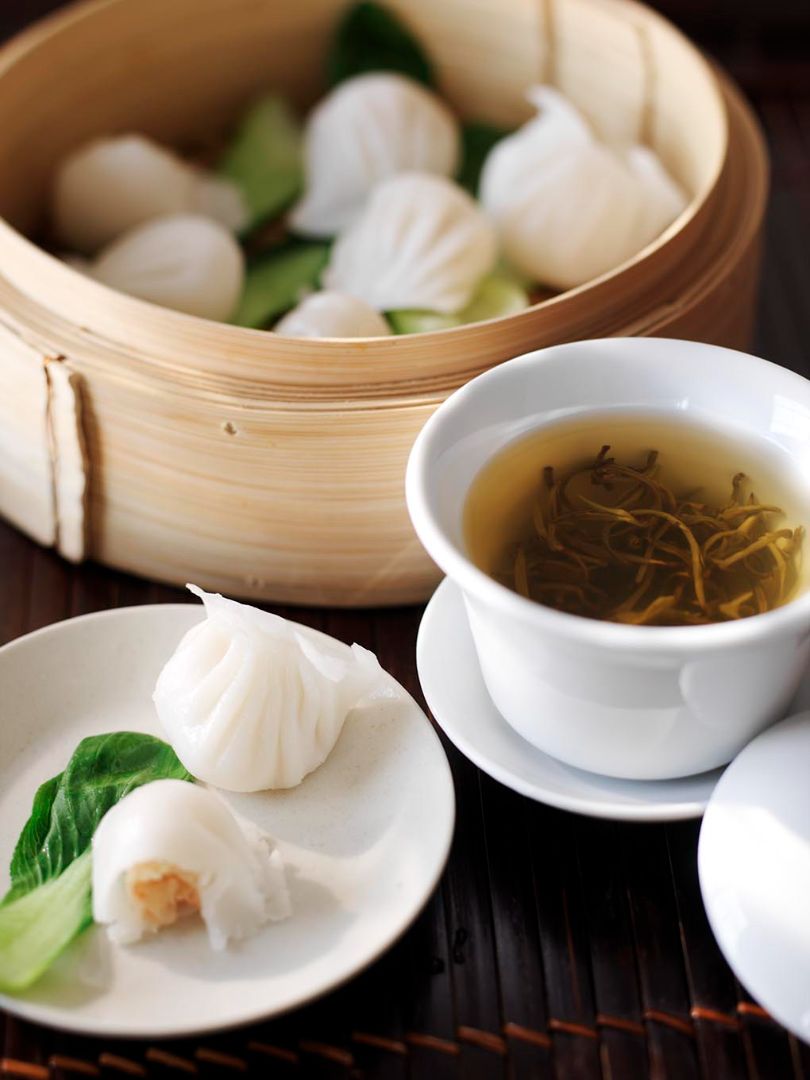The art of combining tea & food

Did you know that just like a good wine, the right tea can elevate the taste experience of your food to a whole new level? We at The Tea
Green tea for fish and light flavors
Green tea, such as Sencha or Jasmine tea, has a fresh flavor that makes it an excellent partner for fish dishes and sushi. The mild umami profile of green tea highlights the delicate flavors of sushi without overwhelming them. But there’s no saying that green teas only go well with Asian food. A Japanese tea can bring out the fishy flavor in a sushi dish or just as easily replace the champagne in a poached sole.
Many of the green teas also elevate desserts to completely new dimensions, such as Sencha for panna cotta or cream cake and Jasmine tea for light chocolate. For those who make their own ice cream, green tea can be delicious in a sorbet or ice cream. Replace some of the liquid in the recipe with brewed green tea (brewed in cream milk if it's ice cream, or water if it's a sorbet) and discover new flavor dimensions!
Tip: Serve a cup Sencha to a fresh sushi plate for a tasty but light combination.
Match for baking or breakfast
Matcha goes incredibly well in most sweets. Try flavoring soft and hard cakes, cheesecake or why not ice cream with matcha - for a fresh green color and a mild tea flavor. Even breakfast porridge or smoothies get an extra boost with a teaspoon of matcha in!
Tip: Mix Match with flake salt for a beautiful and flavorful matcha salt. Perfect to sprinkle over grilled fish, chicken or steamed vegetables.
Black tea for spicy dishes
Black teas, such as Assam or Earl
Darjeeling, which is a pure, elegant black tea, goes well with sweets such as cakes and dark chocolate.
Tip: Test Assam Maud to a spicy curry to bring out the heat of the spices!
Oolong with poultry or seafood
Oolong is a versatile tea with a balance of both lightness and depth, which makes it ideal for pairing with many different types of dishes. Lighter Oolong teas, especially those with floral or fruity undertones, go wonderfully with milder dishes like chicken, duck or seafood. Darker and more oxidized Oolong teas highlight more robust flavors, such as grilled meats, game, and mushrooms.
Tip: Test Dung Ti Oolong to grilled chicken or shrimp.
Pu Erh for strong flavors
Pu Erh has unique food pairing possibilities. Think of Pu Erh as a powerful, ripe red wine when pairing it with food. In general, Pu Erh pairs well with dishes that have a bit more intense and complex flavors.It can be delicious with hearty meat dishes - preferably smoked, fried or grilled. Mushrooms also go well with Pu Erh, as their natural umami and earthiness complement the tea well.
Dark chocolate with a high cocoa content works well because its bitterness and full flavor harmonize with the rich tones of the tea. Pu Erh is also one of the few teas that can stand up to an aperitif like whiskey or other aged spirits. Fruit and light sweets can also be a brilliant complement to the dry, earthy tea.
Tip: Try King of Pu Erh with a juicy steak or lamb dish, preferably grilled to match the smokiness of the tea.
White tea for light desserts
White tea is often subtle and delicate, making it ideal for pairing with lighter desserts such as fruit or vanilla desserts. The soft, floral notes of white tea enhance the sweetness without overwhelming the flavors.
Tip: One cup Silver Needle together with a lemon pie or fresh berries it becomes a magical combination!



